Mulching is a widely practiced gardening technique beneficial to plants when done properly. Mulch is any material spread over the soil’s surface and used to cover it. Mulching adds non-decomposed plant material such as straw, hay, or refuse from processors to the soil beneath plants.
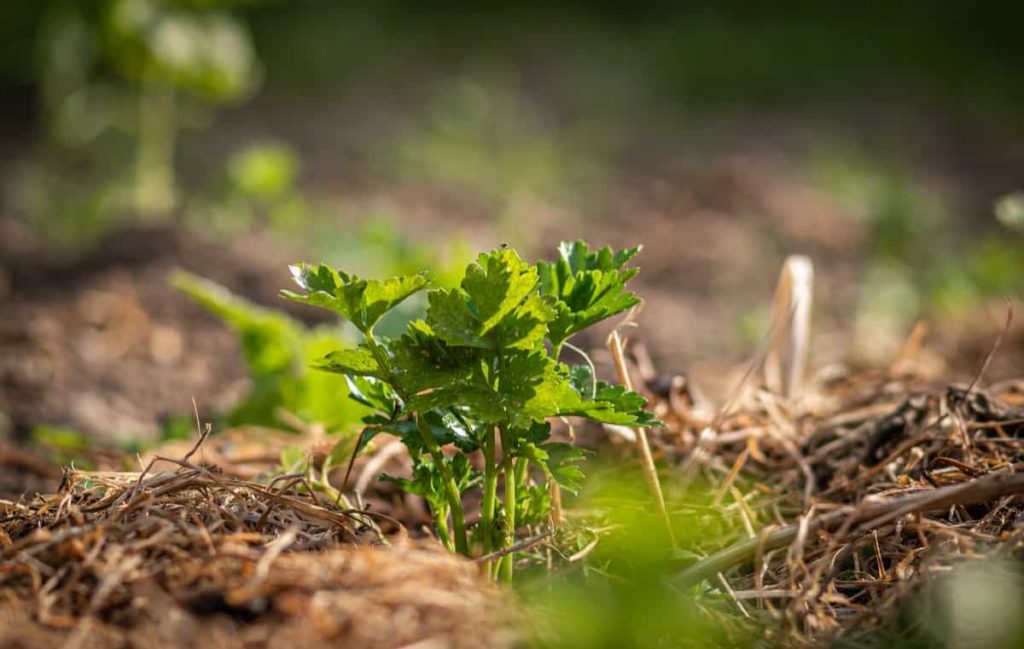
A guide to understand the mulching of plants/trees
What is the process of mulching?
- Mulching covers the soil to create favorable conditions for plant growth, development, and efficient crop production. The technical term mulch means ‘soil cover.’
- It is used around plants to help conserve soil moisture, moderate soil temperature, protect roots, reduce weeds, and prevent stem damage from lawnmowers and weed trimmers.
- Covering the bare surface of the ground with a layer of some external material is called mulching, and the material used for covering is called mulch. It is usually practiced when cultivating commercially important crops, fruit trees, vegetables, flowers, nursery saplings, etc. It is beneficial in yard gardening, containers, and raised beds in home gardens.
What tools are used for mulching?
A square-point shovel works well for moving mulch materials like pebbles, wood chips, and sawdust. A pitchfork works best for loose straw mulch. A large scoop shovel moves most material quickly if you want to move a pile of lightweight, fine mulch-like pine needles or dry sawdust.
- Shovel or pitchfork — If you have scoops of mulch delivered to your home, you will need a pitchfork or shovel to place mulch in the wheelbarrow.
- Wheelbarrow — to easily transport your mulch to different areas of your yard.
- Rake – A bow rake is best for spreading mulch because the small tines are strong, rigid, and designed to break up and spread the material. But you can use a simple leaf rake to get the job done.
- Gloves – Protect your hands when spreading mulch around plants and in hard-to-reach places.
In case you missed it: Mulching Vegetable Crops – A Full Guide
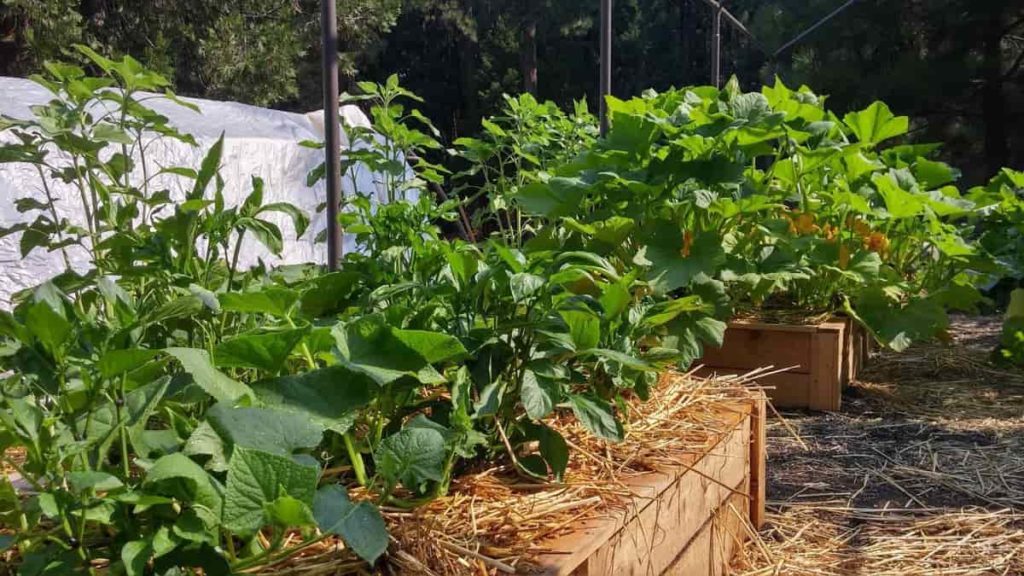
How do mulch flower beds and vegetable gardens?
Mulching large areas is easy, but there are additional tips for spreading mulch that you should follow when working in the tight spaces of vegetable gardens and flower beds. Wait to lay down your mulch until most of the plants have started to grow. That way, you’re not burying any of your beautiful plants. When spreading mulch, it’s important to keep it three inches away from the base of your plants and tree trunks.
Spacing between plants and mulch helps prevent plant rot and other diseases, helps prevent insect nesting grounds, and promotes air circulation. When it comes to vegetable gardens, you want to mulch differently than your flower beds. Consider using light organic materials such as grass clippings, leaf litter, or straw in your vegetable garden. Unlike mulching flower beds, in vegetable gardens, you want to add mulch around the base of your plants.
It is essential to maintain moisture. You should also apply mulch between rows of plants to keep weeds away (but it’s not recommended that you add herbicide around your vegetables). Landscaping this spring Mulch, you’ll see healthier soil, fewer weeds, and better water retention all growing season.
What is mulching in gardening?
Mulching, simply put, is the process of adding composted material to your garden beds to help with weed suppression, plant fertility, water retention, and more. Mulching your garden adds a thick layer of organic matter (usually manure, compost, or bark) to the surface to help retain soil moisture, suppress weeds, add nutrients, and promote plant growth. It will help preserve the roots. A perfect garden should also be attractive.
Mulches conserve soil moisture, increase soil nutrient status, control erosion damage, suppress weeds in crop plants, and remove residual effects of fertilizers, pesticides, and heavy metals. It improves the aesthetic value of landscapes and the economic value of crops.
What month is the best time to mulch?
The right time to mulch the garden depends on the plant material you are mulching and the weather conditions. Generally, mid to late spring is the best mulching season—when the soil warms from the freezing temperatures it experiences all winter. Doing it too early will slow the heating process, which the soil needs to do its job. Mulch timing is everything regarding mulching, which spreads mostly organic matter over the soil surface to protect it and improve its condition.
When should mulching not take place?
- Mulches are applied anywhere from late spring to early winter when the soil is still warm and moist.
- Avoid using mulch in the winter when the soil is too cold and in the summer when it is too hot.
What is the proper method to put mulch around a tree?
- Ensure the mulch is at least 5 inches away from the tree trunk and no deeper than 2 to 4 inches.
- Carefully spread the mulch around the tree into the surrounding landscape, tapering to ground level at the edge of the ring.
- Use fresh and natural mulch like wood chips or bark chips.
In case you missed it: Mulching Brinjal Plants (Eggplants) Organically/Inorganically
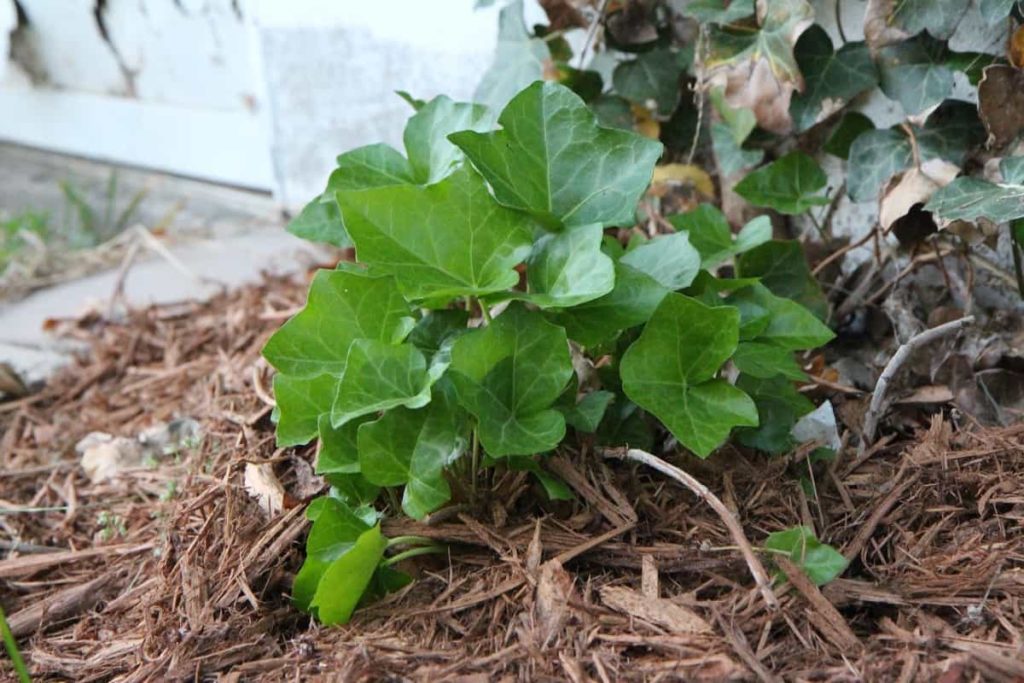
What happens if you use too much mulch?
- Excessive mulch reduces soil oxygen to the roots, causing them to suffocate and die. Roots sometimes grow into excess mulch in search of oxygen and water. The mulch dries out during dry periods, and the roots in the mulch die.
- Piled-up mulch against the trunks of trees and shrubs keeps the bark under the mulch moist, causing rot and a potential entry point for diseases and pests. Pull the mulch back about 3 inches, so it doesn’t touch the bark.
- Light watering can only wet the mulch layer while keeping the soil dry.
- Too much mulch can delay the onset of dormancy in the fall by keeping root zone temperatures warm. Conversely, excessive mulch can prevent dominium from breaking in the spring due to cooler root temperatures.
- It provides a hiding place for voles, a rodent that gnaws the bark and stems of shrubs and lower stems of shrubs.
What should I put down before mulching?
The area is clear of weeds before applying mulch. You can pull them by hand or remove them with a garden hoe or hand weeder. Controlling Weeds in the Lawn and Garden will give you tips on removing weeds without chemicals and with the proper use of herbicides.
What is the advantage of mulching in agriculture?
- Mulching can be defined as the process of covering the soil surface around plants to create favorable conditions for crop growth. It may include moisture and soil conservation, temperature moderation, salinity, and weed control. It has a decisive effect on skin texture, yield, and quality of the crop.
- Mulch will reduce the amount of water that evaporates from your soil, greatly reducing the need to water your plants. By breaking up the soil and allowing better movement of water and air through the soil. Mulch adds nutrients to sandy soil and improves its water-holding capacity.
- Mulching helps retain soil moisture, so less water is needed during irrigation. Mulch directly conserves water. It traps surface water in the soil that would otherwise evaporate quickly.
- Mulching helps regulate soil temperature, which is beneficial for proper root development.
- Mulching also protects the soil from erosion, strong winds, strong sunlight, and overall weather conditions. It is known that when mulching is done on vegetables, flowers, or fruit crops, the overall yield is sometimes doubled.
- Mulching inhibits the growth of noxious weeds and prevents their seeds from germinating. So the biggest weed problem is solved.
- Increase soil nutrients – Mulching can increase, decrease, or not affect soil nutrients, depending on the mulch used. Organic mulches with high nitrogen content often produce higher yields and improved soil quality. Some other organic mulches, such as sawdust, straw, and bark, can also help improve soil fertility.
- Control soil erosion – Mulch is a barrier between the soil and wind/running water. So they do not come into direct contact with the soil, and the soil is not blown or washed away.
What mulch is best for the environment?
- Newspapers, straws, corn husks, dry manure, peanut shells, and compost work well for mulch. Get creative, and you may be able to save some money and the environment.
- Shredded bark is the best mulch on slopes and breaks down relatively slowly. As a bonus, some shredded bark mulches are a byproduct of other industries and are considered environmentally friendly.
- Pine needles, also known as pine straws, are another great choice. They are a renewable, sustainable resource because pine trees naturally shed needles. They are also remarkably effective in preventing run-off. It is perfect for acid-loving plants like roses, azaleas, and oleanders. It may be wise to test soil acidity when using pine straw to grow vegetables, which prefer slightly alkaline soil. The cost is comparable to coco mulch, also ten dollars for two cubic feet.
- Straw mulch is environmentally friendly and inexpensive.
- Eucalyptus wood chips are environmentally friendly. Trees grow rapidly in commercial areas, making wood chips a renewable resource. These act as effective mulch with the added benefit of deterring insects – eucalyptus oil is a natural insecticide. The only problem is that this mulch must be transported over long distances, which is not good for the environment. It is also more expensive than cocoa or pine.
In case you missed it: Mulching Tomato Plants, Procedure, and Benefits
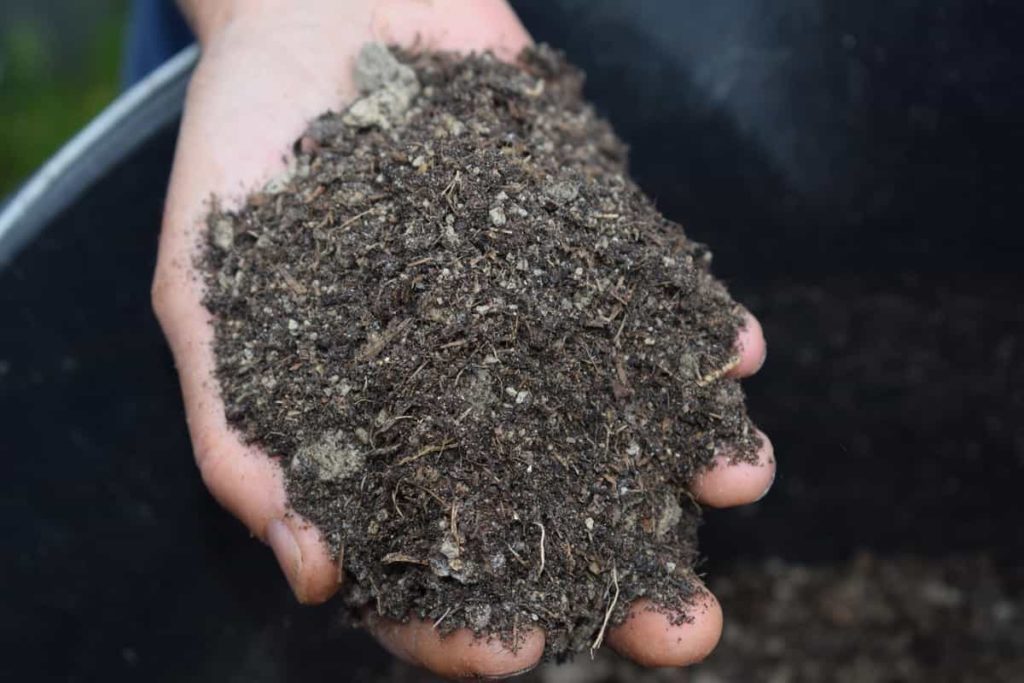
What is the best mulch for plants?
- Compost / Manure / Peat – This widely used organic mulch helps improve soil fertility. It should be spread in a layer of 2 to 3 inches on the soil.
- Grass clippings – Grass clippings are one of agriculture’s most readily and abundantly available mulching materials. If fresh grass clippings are used in agriculture, it decomposes easily and increases the percentage of nitrogen in the soil.
- Straw – Straw is ideal for mulching because it easily attaches to the infield, stays in place, and reflects sunlight which helps some vegetables set fruit. It is used as winter protection and summer mulch in vegetable fields.
- Newspaper – Newspaper mulching helps control weeds and is readily available. The newspaper layer biodegrades in the soil in a short time. It is better than plastic because it will eventually decompose. It can save a lot of time and effort; in fields where last season’s weeds have already matured, dropped seeds will sprout in the coming season.
- Dry leaves – Leaves benefit the soil by providing nutrients when used as mulch. It is used in natural forest regions where trees are abundant. Dried leaves are easily and abundantly available and make good mulch if composted. However, dry leaves are not readily available in spring and are valued as over-winter mulch.
Does mulch affect plant growth?
Mulching improves plant growth by increasing root activity, soluble sugar, and chlorophyll content and providing adequate moisture and nutrients to the root zone.
Garden mulching tips – Before getting too excited and throwing mulch around the garden, it’s important to learn the proper technique. Get the most benefits from mulch by following a few of our simple tips:
- Apply mulch twice a year – In the spring, mulch helps your plants retain moisture from the warm weather ahead and protects the soil from the scorching sun. By the time fall approaches, much of this mulch has dissipated or decomposed.
- Avoid excessive use – Although spreading it thin can make it less effective, spreading mulch too thick can also be harmful—over-applying mulch results in shallow growing roots that will not tolerate dry spells well.
- Don’t kill your plant – Always keep a two-inch diameter area free of mulch around your plant. Never apply the material around your trunk or tree trunk, as this can lead to rot and disease. The bark and roots must be breathable.
How do you apply mulch to plants?
Spread the mulch to the desired depth with a garden rake. For smaller areas, such as along walkways or around mailboxes, you can spread it by hand or with a garden trowel. Apply the mulch to the desired depth and pull it back from the plants, so it does not touch the stems or leaves. There are two basic principles of using mulch to control weeds.
- Firstly, apply mulch to a soil that is already full of weeds, and
- Second, lay down a layer thick enough to prevent new weeds from coming through.
A four-inch layer of mulch will discourage weeds, although a two-inch layer is usually sufficient in shady areas. If you know the garden bed is full of weed seeds or perennial roots, try a double mulching technique to prevent weed infestation. To do this, place the plants, water them well, and spread newspaper and mulch over them.
Does mulching prevent pests?
A bark mulch is made from pine trees and is very helpful in repelling pests. The success of your commercial landscape will also be affected by insects and pests from time to time, and controlling the culprits is an important healthy garden aspect. Some mulches are known to be more effective pest controllers than others.
Some bark repels some insects and not others, so this is important to remember, as mulches attract insects – ask a professional for help when you’re buying mulch. Mulches with strong scents are most likely to deter pests, and bark, such as pine, is particularly effective. It’s also a great method to incorporate open spaces that are aesthetically pleasing and provide a way to separate plants from other equipment.
What materials can be used as mulches?
Materials used as mulch vary according to purpose. They are;
- Organic residues: grass, leaves, hay, straw, shredded bark, sawdust, shells, wood chips, newspaper, cardboard, wool, animal manure, etc.
- Compost: Seed-free materials are ideally used to introduce weeds through the mulch.
- Old carpet (synthetic or natural)
- Rubber
- Plastic mulch
- Rock and gravel
In case you missed it: Organic Mulching in Agriculture, Advantages, Disadvantages
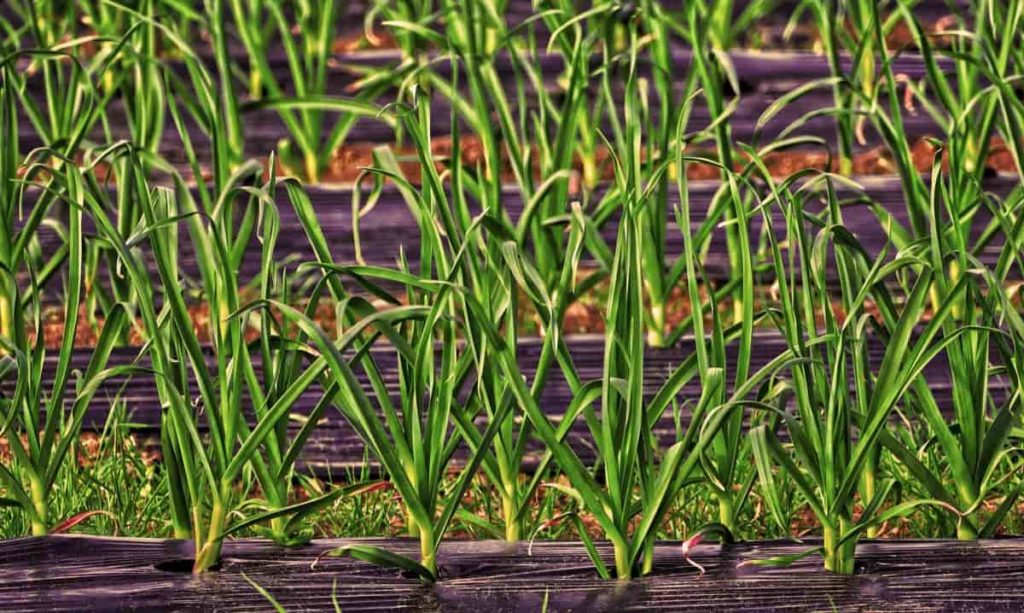
How much mulch is needed?
- Generally, a layer of at least 1 to 3 inches deep is required depending on the application (garden, trees, etc.).
- Mulch is measured in cubic feet. For example, an area of 10 feet x 10 feet with a 3-inch application would require 25 cubic feet of mulch material.
- The long-term benefits of mulching are a positive practice that protects soil resources and improves the landscape.
How to select good mulching?
Choosing the right mulch is an important decision for the farmer. Choosing the right mulch film is important to benefit from mulching.
Thickness – For vegetable crops, the film thickness ranges from 15 microns to 30 microns, while for orchid crops, the film thickness ranges from 100 microns to 150 microns. Depending on the type of crop, choose the appropriate thickness. For vegetables, if you are using more than one year, the crop chooses 30 microns. In the case of short periods, the crop uses 25 microns. For garden crops where greater durability is required, select a 150-micron film if the soil is very stony. Otherwise, select 100-micron film.
Test mulching film – Take a small piece of plastic mulching paper to test against sunlight. If it is transmitting light, never use it.
Buy quality materials from renewable sources – A good mulching paper is characterized by long durability, airproof and thermal proof (they transmit no or very little light).
Which mulch is best for preventing weeds?
Bark mulch is an excellent choice for use as a weed suppressant because it inhibits weeds in two important ways. Firstly, by covering the soil with a thick layer, bark mulch deprives weed seeds and the resulting plants of the sunlight they desperately need to germinate and thrive.
How does mulching benefit natural farming?
- Mulching with organic material increases soil nutrients, maintains optimal soil temperatures, limits evaporation rates from the soil surface, inhibits weed growth, and prevents soil erosion.
- It improves all soil properties, physical, chemical, and biological.
What are the types of organic mulch?
- Important organic mulch materials are grain straw, fresh or old hay, freshly cut forage or cover crops, chopped brushes, wood shavings, tree leaves, cotton gin waste, rice or buckwheat hulls, and other crop residues. Residues included. Hay and straw are among the most commonly used organic mulches in organic gardening.
- Organic mulches should be no more than three inches deep.
- Carefully monitor the plants to ensure water penetrates through the mulch layer into the soil. It can be worked into the planting bed to improve the soil before fresh mulch is applied or removed and worked into other garden areas.
- Organic mulches can suppress annual weeds and offer important benefits like organic matter, moisture conservation, soil protection, and temperature moderation.
- Hay, straw, and freshly cut forage or cover crops are among the most versatile and widely used organic mulches. They can inhibit weed germination and emergence when applied at appropriate rates, are relatively easy to apply, reduce soil moisture evaporation losses by allowing rainfall to reach the soil, and provides benefits.
- Care must be taken to avoid bringing weed seeds or herbicide residues with the grass from off-farm sources. Chipped brush, tree leaves, and other forest-based mulches are often beneficial for small fruit and other perennial crops but may not be an option for weed control on a multi-acre scale.
Where is mulching practiced?
Several materials are used as mulches, which are used to regulate soil temperature, retain soil moisture, suppress weed growth, and for aesthetics. They are planted on the soil surface, around trees, paths, and flower beds to prevent soil erosion on slopes and crop production regions.
Mulching is mainly employed for;
- Conservation of moisture in rain-fed areas
- Reduction of frequency of irrigation and saving of water in irrigated areas
- Moderation of soil temperature in greenhouse cultivation
- Soil solarisation for control of soil-borne diseases
- Reduce the effects of rainfall, prevent soil erosion, and maintain soil structure
- In areas where only high-value crops are grown
What is the main difference between organic mulch and inorganic mulch?
Organic mulches are usually byproducts of other industries, while inorganic mulches are made from non-natural or man-made materials. While the two types are at opposite ends of the spectrum, each has been used for aesthetic reasons and has advantages. Using organic mulch in the landscape has many benefits, including:
- Conserves soil moisture by reducing evaporation.
- Reduces soil erosion.
- Moderates soil temperature.
- Prevents weed growth.
- Encourages the growth of beneficial soil microorganisms.
Inorganic mulches are mainly used to create barriers to weeds. Although inorganic mulch does not provide the same nutritional benefits to the soil as organic mulch does, there are other benefits associated with its use. These include:
- Retains moisture.
- Minimal replacement required.
- Low maintenance.
- Practically versatile.
- High availability in most commercial garden centers.
In case you missed it: Types Of Mulching, Advantages of Mulching In Farming
Why is plastic mulching important?
Plastic mulch can increase soil temperature, reduce soil evaporation, increase carbon dioxide concentrations and nutrients, control weeds, protect plants from pests, can protect and reduce fruit rot; some experiments have also shown that plastic mulch can alter salinity in the soil.
Advantages of plastic mulching are;
- 1. It prevents direct evaporation of soil moisture and thus limits water loss and conserves moisture.
- 2. Reflective mulch will repel some insects.
- 3. Suppressing evaporation prevents the rise of water-containing salts.
- 4. Mulch can facilitate fertilization and reduce the loss of plant nutrients through leaching.
- 5. Mulches can provide a barrier to soil pathogens.
- 6. Opaque mulches prevent the germination of annual herbs from receiving light.
- 7. Mulches maintain warm temperatures even at night, enabling seeds to germinate and young plants to establish a strong root system quickly.
How does mulching improve soil fertility?
Mulch is organic material on top of the soil (often grass clippings). It reduces the chances of weeds, fights soil erosion, and improves soil structure by providing essential nutrients. The health of your soil is important. Mulch prevents water vapor loss, locking in nutrients. The mulch nutrients are slowly added to the soil, creating a better environment for plants to grow. Lastly, it can keep the soil cooler in the heat and warmer in the winter.
It leads to a more balanced soil temperature, which in turn, makes the soil more fertile. Mulched soil has slightly higher evapotranspiration than bare soil in the final phase. The total soil moisture storage capacities depend on soil porosity, structure, and composition, which can be developed with the help of organic mulching.
Conclusion
Mulching is the best way to maintain a healthy, weed-free garden. In this post, you will learn about the benefits of mulching, what type of mulch to use, when to apply mulch, and many great tips for mulching a garden.
- Types of Pesticides Used in Agriculture: A Beginner’s Guide
- Economical Aquaculture: A Guide to Low-Budget Fish Farming
- 15 Common Planting Errors That Can Doom Your Fruit Trees
- How to Make Houseplants Bushy: Effective Tips and Ideas
- Innovative Strategies for Boosting Coconut Pollination and Yield
- Pollination Strategies for Maximum Pumpkin Yield
- The Complete Guide to Chicken Fattening: Strategies for Maximum Growth
- Natural Solutions for Tulip Problems: 100% Effective Remedies for Leaf and Bulb-Related Issues
- Revolutionizing Citrus Preservation: Towards a Healthier, Greener Future
- Natural Solutions for Peony Leaf and Flower Problems: 100% Effective Remedies
- Maximizing Profits with Avocado Contract Farming in India: A Comprehensive Guide
- Natural Solutions for Hydrangea Problems: 100% Effective Remedies for Leaf and Flowers
- The Ultimate Guide to Choosing the Perfect Foliage Friend: Bringing Life Indoors
- From Sunlight to Sustainability: 15 Ways to Use Solar Technology in Agriculture
- The Ultimate Guide to Dong Tao Chicken: Exploring from History to Raising
- The Eco-Friendly Makeover: How to Convert Your Unused Swimming Pool into a Fish Pond
- Mastering the Art of Delaware Chicken Farming: Essentials for Healthy Backyard Flocks
- 20 Best Homemade Fertilizers for Money Plant: DIY Recipes and Application Methods
- How to Craft a Comprehensive Free-Range Chicken Farming Business Plan
- Brighten Your Flock: Raising Easter Egger Chickens for Beauty and Bounty
- How to Optimize Your Poultry Egg Farm Business Plan with These Strategies
- Subsidy for Spirulina Cultivation: How Indian Government Schemes Encouraging Spirulina Farmers
- Ultimate Guide to Raising Dominique Chickens: Breeding, Feeding, Egg-Production, and Care
- Mastering the Art of Raising Jersey Giant Chickens: Care, Feeding, and More
- Ultimate Guide to Raising Legbar Chickens: Breeding, Farming Practices, Diet, Egg-Production
- How to Raise Welsummer Chickens: A Comprehensive Guide for Beginners
- How to Protect Indoor Plants in Winter: A Comprehensive Guide
- Ultimate Guide to Grow Bag Gardening: Tips, Tricks, and Planting Ideas for Urban Gardeners
- Guide to Lotus Cultivation: How to Propagate, Plant, Grow, Care, Cost, and Profit
- Agriculture Drone Subsidy Scheme: Government Kisan Subsidy, License, and How to Apply Online
- Ultimate Guide to Raising Araucana Chickens: Breed Profile, Farming Economics, Diet, and Care
- Bringing Hydroponics to Classroom: Importance, Benefits of Learning for School Students
- Ultimate Guide to Raising Polish Chickens: Breed Profile, Farming Economics, Diet, and Care
- Ultimate Guide to Raising Australorp Chickens: Profile, Farming Economics, Egg Production, Diet, and Care
- Silkie Chicken Farming: Raising Practices, Varieties, Egg Production, Diet, and Care
- Sussex Chicken Farming: Raising Practices, Varieties, Egg Production, Diet and Care
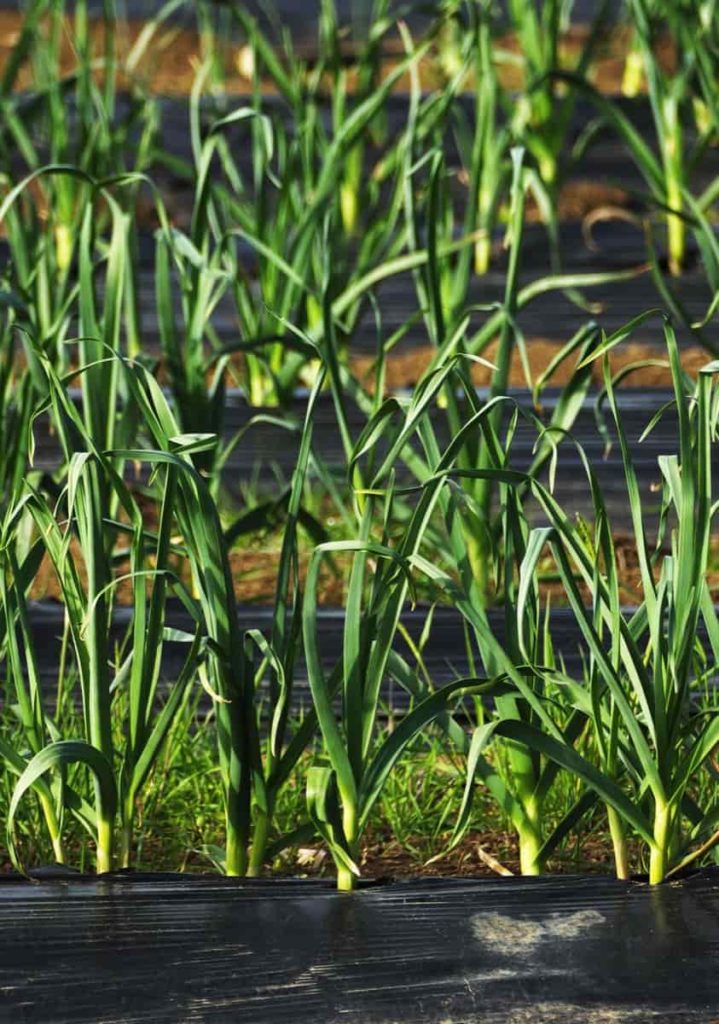
Hi Jagdish, Thank you for the guide. Can you please make available offline pdf download or print button.
It is a very useful blog and very important information about Mulch.